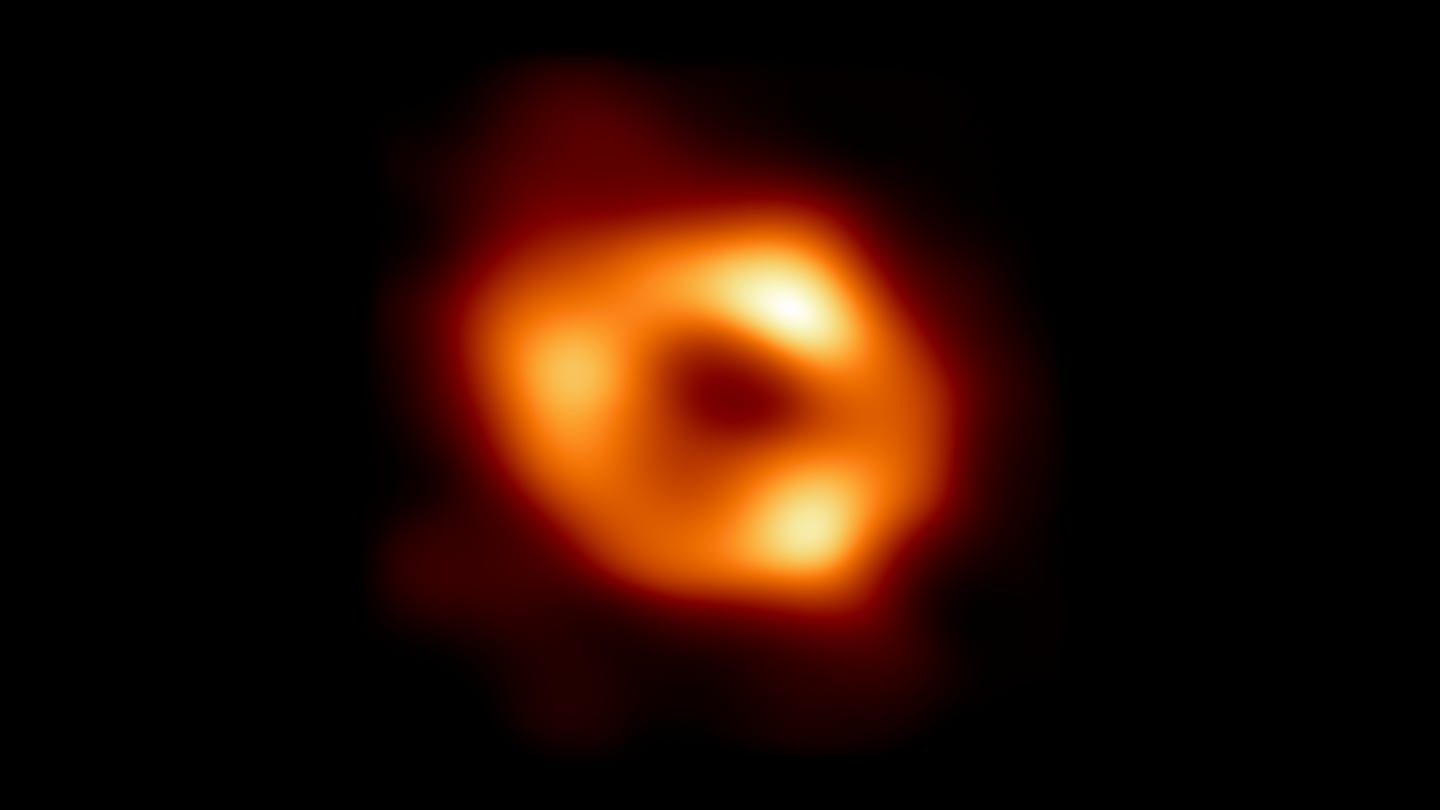
Scientists have captured the first-ever picture of the black hole at the center of our galaxy.
A team of scientists that included researchers from Harvard and MIT on Thursday unveiled the first-ever picture of the supermassive black hole at the center of the Milky Way galaxy.
The Event Horizon Telescope (EHT) team — which includes researchers from the Center for Astrophysics | Harvard & Smithsonian (CfA) and MIT’s Haystack Observatory — used observations from a worldwide network of radio telescopes to look at Sagittarius A*, or Sgr A*, a black hole with a mass 4 million times that of the sun.
The black hole, about 27,000 light-years away, had never before been directly observed, though the way stars orbited around it had led scientists to believe it was there.
“For decades, astronomers have wondered what lies at the heart of our galaxy, pulling stars into tight orbits through its immense gravity,” CfA astrophysicist Michael Johnson said in a statement. “With the EHT image, we have zoomed in a thousand times closer than these orbits, where the gravity grows a million times stronger. At this close range, the black hole accelerates matter to close to the speed of light and bends the paths of photons in the warped spacetime.”
“We now see that the black hole is swallowing the nearby gas and light, pulling them into a bottomless pit,” Ramesh Narayan, a theoretical astrophysicist at the CfA, said in the statement. “This image confirms decades of theoretical work to understand how black holes eat.”
The discovery was announced in multiple news conferences around the world. The results were published in a a special issue of The Astrophysical Journal Letters,
At a news conference at the National Press Club in Washington, Vincent Fish, the operations data manager and scheduler for the EHT and a research scientist at MIT’s Haystack Observatory, said, ”Our collaboration’s remarkable images of Sgr A* [pronounced ‘Sadge A star’] and our scientific conclusions were a combined effort that involved not just the handful of us on stages around the world today, but more than 300 people all working together united by our fascination with black holes.”
“Our results built upon decades of studies by other groups that established that Sgr A* contains a dark massive object, characterized its properties and obtained accurate measurements of its mass and distance,” he said, noting the work of Andrea Ghez and Reinhard Genzel and their teams. Ghez and Genzel won Nobel prizes in 2020 for developing evidence of the black hole at the center of our galaxy.
“I’ve been with the project now for almost 15 years. It’s been exciting watching the project evolve, watching the collaboration grow,” said Fish. “The data get better and better. What seemed like it was going to be an impossible task is now -- well, it’s still hard, but it’s doable.”
The picture shows a ring of light surrounding a black hole. Paul Tiede, a postdoctoral researcher at CfA, said, “Around this black hole as matter starts to fall in, it heats up. ... We’re seeing this really hot gas give off light,” he said.
Black holes are thought to reside at the center of most galaxies, but scientists don’t know why, said Tiede. “It’s very much an open question what formed these things and how they’re related to the central galaxy,” he said.
Scientists unveil first-ever picture of supermassive black hole at center of Milky Way - The Boston Globe
How scientists created the first image of the black hole at the centre of the Milky Way
.
Last edited:







